There’s something deeply satisfying about living in a time where we are talking about railway re-openings, rather than line closures. Such is the transformation in the fortunes of Britain’s Railways since the turn of the century, we are now looking at a lot more than simply station re-openings, but at a very substantial piece of new railway.
But could the opening of the Borders Railway ever extend down to Carlisle? And is there really a business case for it?
First, let’s look at why the line closed in the first place - and yes, it’s down to that man Beeching again. Whether your view of Dr Richard Beeching is one of an official brought in to do the dirty work of a government already intent on closing lots of Britain’s railway network, or one of a man who carried out that work with great zest without questioning whether other ways were possible to find the savings required - he certainly achieved the intended objective of chopping the railway map right back.
As Beeching swung his famous axe, the railways in Scotland were ravaged - 650 miles of railway and hundreds of stations were closed, leaving communities to rely on much longer journeys on buses (ironically now suffering cuts themselves).
Printed on page 102 of the report was confirmation of possibly the major casualty in Scotland: the 98-mile line from Edinburgh to Carlisle, of which the Borders Railway formed part - the ‘Waverley Route’. The line was the North British Railway’s (NBR’s) route between Carlisle and Edinburgh, originally running between the Scottish capital and Hawick from 1849, and then on to Carlisle from 1862.
The path chosen for the Waverley Route was significantly longer than the direct route as the crow flies, to allow for the formidable natural barriers of the Southern Uplands and the not unsubstantial summits of Whitrope (1,006ft) and Falahill (880ft).
With this in mind, the NBR’s marketing department decided to extol the virtues of the line as a scenic railway. An advertisement from 1877 mentions that “the Waverley is the most interesting and attractive, and is the only Route which enables the tourist to Melrose (for Melrose Abbey and Abbotsford) and St Boswells (for Dryburgh Abbey)”.
The name Waverley Route began to be used around the same time as the Carlisle extension opened, and was inspired by the Waverley novels of Sir Walter Scott. The author lived nearby the line at Abbotsford House, and had taken an active interest in early railways.
But the line wasn’t a major success, causing one director of the NBR to call it “the most serious burden on the North British”, although the situation improved after the Midland Railway completed the Settle-Carlisle Line (S&C). Through services between St Pancras and Edinburgh via the S&C and the Waverley Route duly started on May 1 1876.
Journey times proved to be the major stumbling block, however, and in a world increasingly wanting to get from A to B faster, the Waverley Route couldn’t compete. By 1910, the journey from London to Edinburgh on either the East or West Coast Main Lines took around 8hrs 15mins - via the Waverley it was 8hrs 40mins.
The branch lines off the route were closed progressively from 1932, as the increase in road transport took hold. And with dwindling freight and low passenger numbers, the British Railways Board identified the Waverley Route as prime for closure, with the plans detailed in the Beeching Report of 1963.
The line’s inclusion in the report was a big shock in the Borders, and even prompted the Scottish Office to request that the Minister of Transport postponed the publication of closure notices. In the 1964 General Election, the Beeching-supporting Conservative MP Charles Donaldson had his majority slashed by the fresh-faced Liberal candidate David (now Lord) Steel, who opposed the closure of the line. Steel won the seat a year later, in a by-election resulting from Donaldson’s death in December 1964.
Many thought the election of a Labour Government in 1964 would spare the threatened lines, but Labour saw the possibility of reducing the spend on the railways while being able to blame the Beeching Report started by the previous Conservative administration.
Despite 508 objections to the Transport Users’ Consultative Committee, Minister of Transport Richard Marsh referred to figures showing that passenger numbers on the line had fallen 30% between 1964 and 1967, while car ownership had increased by 120%. He came to the conclusion that the £700,000 annual subsidiary could not be justified, and on July 15 1968 he announced to the House of Commons that the line was to close.
That £700,000 figure for the annual subsidiary is now widely thought to be vastly inflated, a tactic we now know was used by both government and British Rail for many more years - most spectacularly, perhaps, for the completed closure of the Woodhead Line and the proposed closure of the Settle-Carlisle Line.
On the Woodhead Line, BR claimed the cost of converting the once-standard 1,500V DC overhead wiring to 25kV AC was so prohibitive as to make the line unviable, when it was clearly a reason needed to justify the decision from on high that one of the routes over the Pennines had to go.
Again in the early 1980s, BR said the cost to repair the magnificent Ribblehead Viaduct would be between £6 million and £9m - enough to make the S&C uneconomic to remain open. Fortunately, thanks to the efforts of very vocal campaigners (clearly with echoes of the Waverley and Woodhead lines ringing in their ears), the S&C was famously reprieved in 1989.
It was six years after the closure recommendations were made in Beeching’s report that the actual closure of the line took place, in January 1969. The Railway Correspondence & Travel Society organised a rail tour - the ‘Waverley Farewell’ on January 5, with Deltic D9007 Pinza hauling a rake of nine Mk 2 coaches, with what seems now to be a real journey… starting at Leeds, it headed northwards over the S&C and then to Riccarton Junction onto the Waverley Line through Hawick to Edinburgh, and back again.
The last ever service over the full line was the 2156 Edinburgh-St Pancras Sleeper service, scheduled to arrive at the London terminus on the morning of January 6.
Today, the whole concept of that service seems most strange… the idea that a train from Edinburgh would be going to a London station other than King’s Cross or Euston (and for that matter, a Sleeper service going into St Pancras). Hauling the train southwards was Sulzer Type 4 (later Class 45) D60 Lytham St Annes, although it reached Carlisle some two hours late. Such was the strength of feeling in the area, a coffin was positioned on a makeshift bier in Hawick station, and the line was blocked at Newcastleton with the level crossing gates locked by demonstrators.
When the sound of the Sulzer had gone, the last train had travelled over the full railway between Carlisle and Edinburgh, and the line between Longtown and just south of Hawick closed completely the same week. Freight trains did continue northwards from Hawick, but this was only temporary, with the closure of this remaining section of the line complete by the end of April 1969.
Through the dark times of the 1970s and early 1980s, Scotland’s railways seemed to be struggling with a declining network made up of old, worn stock. But by the mid-1980s, attitudes had begun to change. Stations started to be opened (or re-opened), and the reinstating of passenger services along the previously freight-only Edinburgh to Bathgate line in 1986 was an outstanding success - leading to the extension of the line to Glasgow and electrification in 2010.
These station re-openings throughout the country left Midlothian and Scottish Borders Councils as the only two main line regions not to have any stations in their area by 2010. But with the successes of lines such as at Bathgate, supporters such as the Campaign for Borders Rail saw the possibility of re-opening the Waverley Route. They gathered thousands of signatures on a petition pushing for the railway to be re-opened.
The movement gained an important foothold in April 1999, when the Scottish Executive commissioned a Feasibility Study into re-opening the Waverley Line between Edinburgh and Carlisle, following recommendations made in an interim report of the Borders Working Party (set up in August 1998 by then Scottish Office Business and Industry Minster Lord Macdonald).
This study, by consultant Scott Wilson, was published in February 2000 and found that:
ν Much of the trackbed and structures could be re-used, with speeds of 70mph-90mph possible on a single line. But a range of major constraints on the route, such as crossing the A7 Edinburgh City Bypass, would require significant investment to overcome.
ν The route would be more suited to regional-style diesel multiple units than high-speed inter-city services.
ν A half-hour service between Tweedbank and Edinburgh could cover its own direct operating costs.
But critically, the study found against reinstating the whole of the Waverley Route from Edinburgh to Carlisle. It said that would be expensive - over £100m (in 1999 figures) for basic infrastructure - because of the gaps in the infrastructure south of Tweedbank. It also found that train operating companies and Railtrack saw few benefits to such a through route, as it would be relatively slow for passengers and the gradients made it unattractive to through freight.
In September 2003, the Waverley Railway Bill was lodged with the Scottish Parliament, and with it the order to get authorisation to rebuild the railway. By March 2005, the Scottish Executive announced it had provisionally agreed to provide £115m (out of a total cost of £151m) to re-open the line to the Scottish Borders.
Delays (due to a council failing to notify the owners of 130 properties in Gorebridge and Galashiels of the plans, when the Bill was first introduced in 2003) meant it wasn’t until June 2006 that the Scottish Parliament voted 114-1 in favour of the Waverley Railway Bill. It was given Royal Assent and became the Waverley Railway (Scotland) Act 2006, with approval to build the line from Edinburgh to Tweedbank (just south east of Galashiels). The Scottish Parliament now pledged £155m towards the cost, with £11.3m from local councils and £7.4m from developers.
In 2008 Transport Scotland - the national transport agency created in 2006 - took over responsibility for the project, which became known officially as the Borders Railway.
Inevitably, it wasn’t long before those costs had increased to between £235m and £295m. Then there were the delays caused by the Scottish Government’s decision that the scheme should be financed not by public investment, but as a public/private partnership through a ‘Design, Build, Finance and Maintain’ initiative.
But due to the economic downturn, two of the three firms shortlisted to construct the railway dropped out, and so the Government asked Network Rail to take charge. The cost was concluded at £294m (at 2012 prices), and the contributions from the area’s councils were capped at £30m each.
Construction of the railway was undertaken by Bam Nuttall, with site clearance works starting in early 2012. By October 2012, ground stabilisation work began in the Midlothian area (caused by the very coal mines that were once the freight lifeblood of the original line). Main construction began in April 2013, and by June 2015 driver training had begun in preparation for the September opening.
So, now that the Borders Railway is completed, and trains are finally running between Edinburgh and Tweedback, is there a case to re-open the line fully to Carlisle?
Well, put simply, yes.
Remember, the original feasibility study published by the Scottish Office in 2000 concluded that reinstatement of the whole route between Edinburgh and Carlisle would offer few benefits (and because of the slower nature of the line was unlikely to win many passengers), yet didn’t rule it out even back then.
That study mentioned a number of major issues on the Borders Railway route that would need to be addressed, such as the A7 Edinburgh City Bypass and the significant infrastructure gaps in the onward route to Carlisle. Well, Network Rail and the construction team have solved the challenges on the current line, within the agreed budget.
There are now important gaps in the rail route - the viaduct over the River Teviot in Hawick, for example, and the old Hawick station becoming a leisure centre - but these aren’t insurmountable.
As for the slower nature of the line, this is actually a virtue, one that has only recently been noticed for the current re-opened section. ScotRail’s new “scenic” Class 158 DMUs, with improved seating-to-window matches and other enhancements, are a great move in the right direction. Coupled with the steam specials and the £367,000 international marketing campaign from Visit Scotland, these show new vigour in the way the line’s tourist potential can be exploited.
Speed isn’t needed here. After all, the majority of the 1.2 million journeys made on the S&C every year aren’t made for the line’s high speed. Besides, with modern rolling stock, journey times don’t have to be compromised with station stops. In 1953, the fastest journey between Edinburgh and Galashiels was around 52 minutes - today, it’s about the same, but still stopping at seven stations along the way, as opposed to four for the same duration trip in 1953.
The economic benefits of the Borders Railway can be seen in the housing ‘explosion’ along the new rail corridor, with the number of new homes built in one area more than doubling in the space of a year - all thanks to the railway.
Of course, this is nothing new. The whole idea of “if you build it, they will come” was masterminded by the Metropolitan Railway, with its Metro-land concept in the mid-1910s, as a way of capitalising on land it owned around its new railway developments outside central London.
There’s every possibility this could also happen alongside other parts of the newly opened Waverley Route, matching high-quality housing to excellent rail transport links.
And even before it was opened, the Borders Railway had councils looking at possible re-openings on the back of the new line. In 2013, Midlothian Council asked Heriot-Watt University to carry out a feasibility study into re-opening ten miles of railway from the new Borders line to connect to the town of Penicuik, one of the largest towns in Scotland currently without a rail link. The study was completed in June 2014, but has yet to be published.
So, is there the political will to extend the line and re-create the Waverley Route?
Well, talking in April 2014 when still Scotland’s First Minister, Alex Salmond hinted that the entire line could be re-opened once the Borders Railway section was up and running.
And in June 2015, Infrastructure Minister Keith Brown confirmed that transport officials from the Scottish Government have held talks on the possible extension beyond Tweedbank.
As recently as July 2015, Business and Tourism Minister Fergus Ewing gave a fairly clear vision during a visit to the Borders, saying: “I think the more effective and the more successful the Borders Railway is when it re-opens, the stronger the case will be to extend it in the future.”
However, even the current re-opened section hasn’t received wholehearted support. In a throwback to his party’s 1963 Government view on railways, John Lamont (the current Conservative MSP for Ettrick, Roxburgh and Berwickshire) raised concerns in July 2010 that the project wasn’t worth it, and could take away resources from other transport schemes in the area.
In 2013, Lamont also called for the disused railways in Borders to be converted into cycle tracks, seemingly discouraging any further re-openings. “By converting old rail lines and building new cycle routes, we can help to vastly improve safety and encourage more people to take up this healthy hobby,” he said.
Interestingly, however, Lamont’s public comments do actually support the extension of the line to Carlisle - and recognise the benefits that would bring. Speaking in 2010, he said: “Many people remain unconvinced that the new railway to Galashiels will make much difference to most communities in the Borders, particularly since it will not go to Hawick and on to Carlisle.”
He also said in 2010 that a survey on the Borders Railway had shown people wanted better public transport, but there was “frustration” that the line would not extend to Hawick or link with the West Coast Main Line.
Perhaps this could be the most logical next step - an extension of the line in parts, first to Melrose and Hawick, and then all the way to Carlisle.
What could the costs be for re-opening all the way to Carlisle?
We’d have to wait for the experts and consultants to assess the route first, but one thing is certain: it would cost significantly more than the £295m the Borders Railways has cost - not least because the remaining section is more than double that length, and has more infrastructure to replace.
Decisions over the disposal of railway land (taken in the 1970s, 1980s and even the 1990s) will push the cost of re-opening the Waverley Route an awful lot higher than it needed to be. A figure of at least £700m (in 2015 prices) has been quoted to me on more than one occasion!
Until any feasibility study into the re-opening of the Waverley Route, at least the opening of the Borders Railway starts to exorcise the ghost of the Beeching Report for the Scottish Borders.
What we have discovered ultimately is what all of us connected with the railways already knew. Miles and miles of railway, connecting many millions of people to each other and to the wider country, were sacrificed using a now widely understood discredited methodology in order to ostensibly make the railways pay their own way.
Perhaps sometime in the future we’ll be able to travel from Edinburgh to St Pancras via the Waverley Route and the S&C. I hope I’m still around to make that journey…
- This feature was published in RAIL 784 (September 30 - October 13 2015)

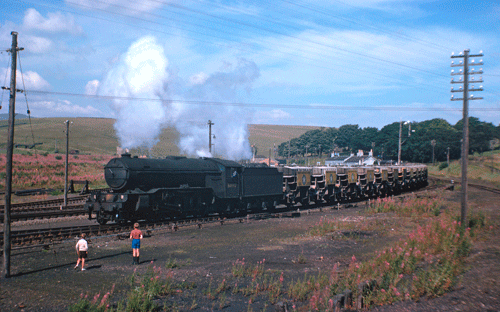
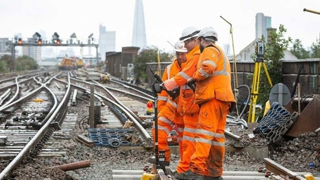
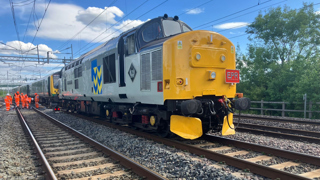
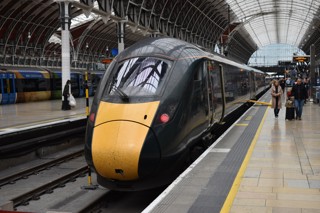
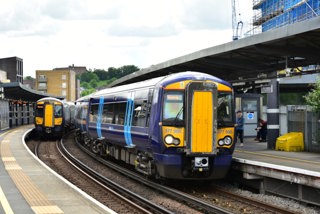
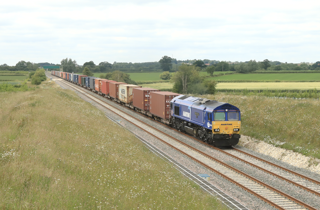










frank h - 07/01/2016 00:07
I can see it being extended to Hawick but no further, it's about 41 miles to Carlisle from there with Langholm the only major town/village.